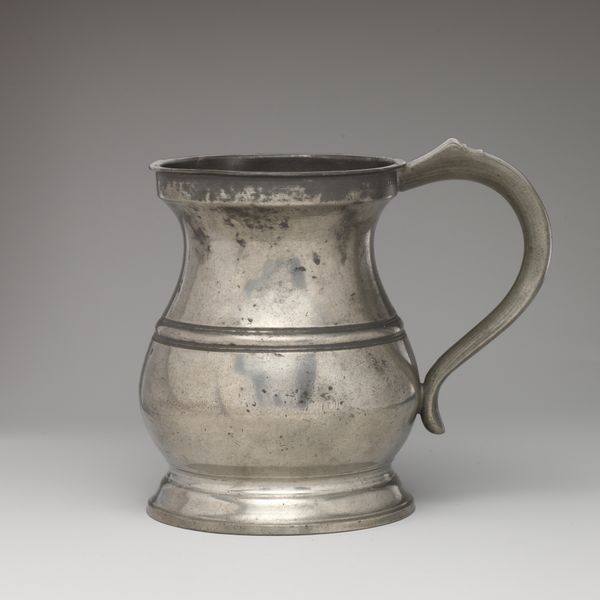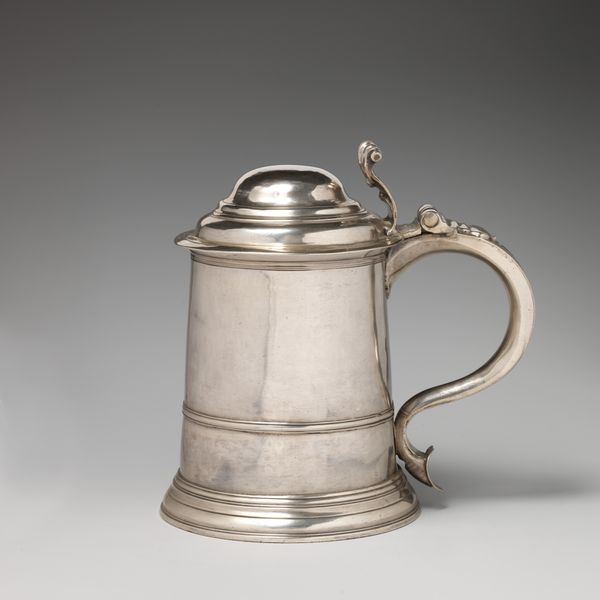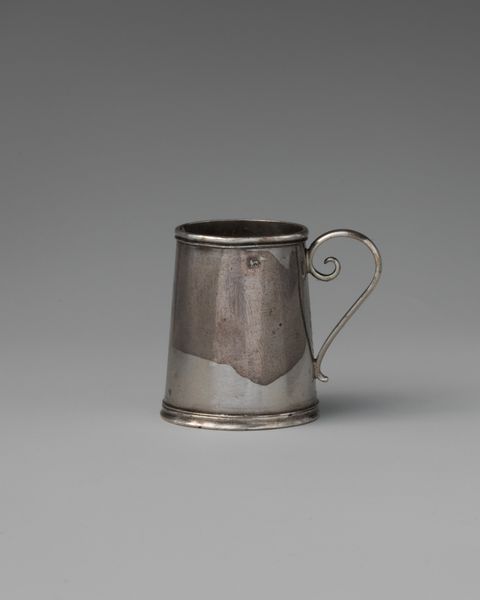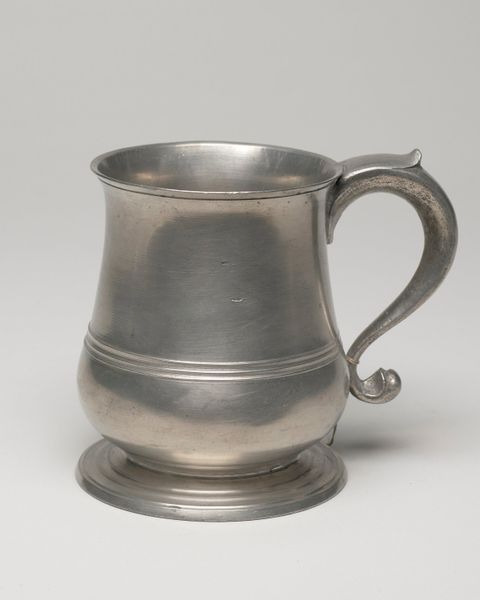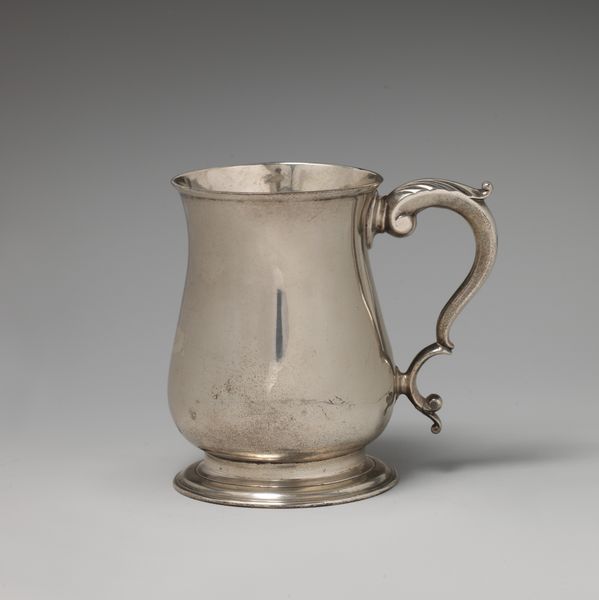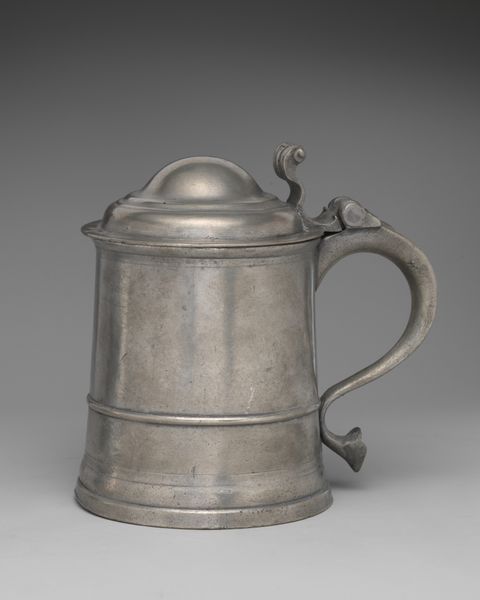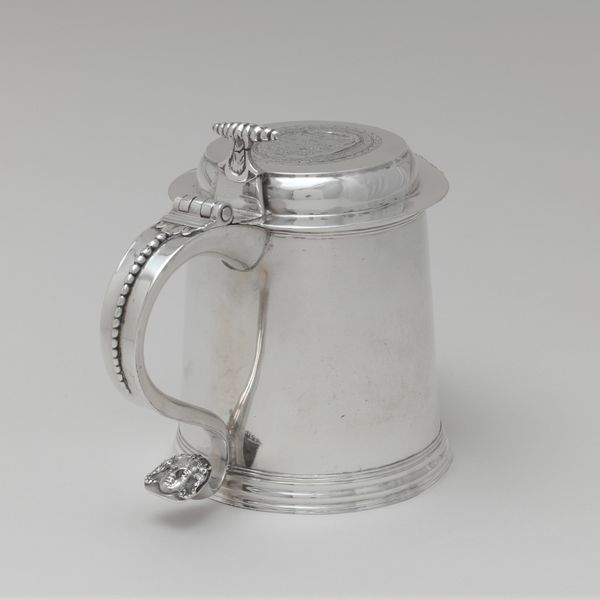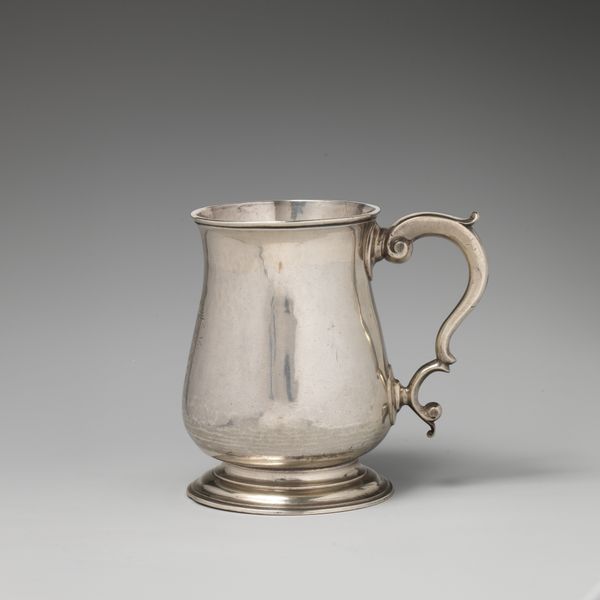
silver, metal, metalwork-silver, sculpture
#
silver
#
baroque
#
metal
#
metalwork-silver
#
sculpture
#
decorative-art
Dimensions: Overall: 5 3/4 × 6 3/4 × 4 3/4 in. (14.6 × 17.1 × 12.1 cm)
Copyright: Public Domain
Curator: Take a look at this charming, understated piece. It's a silver mug, created between 1759 and 1760 by John Langlands. It’s currently held in the collection of the Metropolitan Museum of Art. Editor: My first impression is how solid it appears; weighty, substantial. You can practically feel the cool metal against your palm. Curator: Indeed. Its baroque influences can be seen in the details of its construction. Objects such as these speak volumes about trade, social class, and colonial histories. Who could afford silver, and what was being served in such a mug? Editor: Right. We must remember that material culture reveals hierarchies of access and power. This mug isn't just about enjoying a drink. Was it brewed in fair working conditions or off of exploitation? This artifact comes with social implications in both consumption and creation. Curator: I agree, and understanding its display in the museum helps reveal certain values too. Museums display artifacts with particular intentions. Take, for instance, this mug in the Met collection; what is its value? What narrative is crafted through that very placement? Editor: Absolutely! Context is crucial. Was it primarily a decorative item for display? Did its owners take part in philanthropic works to alleviate the systemic inequality that created objects of this type possible for the elite? We'll never know, so objects like these make us look and inquire, making this so very provocative, Curator: The simplicity belies that rich history. What seems like a household object carries immense symbolic weight when critically considered, inviting us to consider a multitude of perspectives and the complex tapestry of socio-economic narratives. Editor: Definitely a powerful object that really gives insight into production practices and how decorative arts reflect that socio-economic system. It shows how everyday objects carry political baggage that we, as informed people, must critically evaluate to create change.
Comments
No comments
Be the first to comment and join the conversation on the ultimate creative platform.

